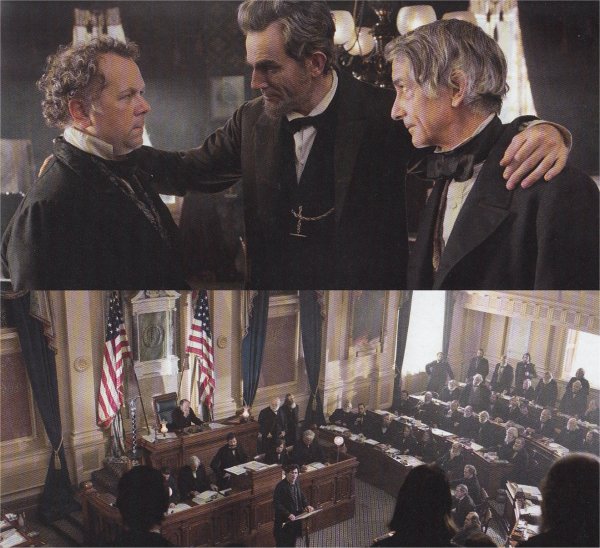

"This is how we treat slaves stand in favor of the slave and we will treat you the same" was the clear message. The trend reached an apex when South Carolina Congressman Preston Brooks, incensed by Massachusetts' Senator Charles Sumner's anti-slavery stance and imputations against his cousin, assaulted Sumner on the Senate floor, nearly beating him to death.

South Carolinian John Calhoun practiced this art for years, threatening to secede as early as 1832, when fellow South Carolinian Andrew Jackson backed him and his associates down (see McPherson's essay "The War of Southern Aggression"). There can be no questioning of the South's racial adjustment, and herein lies the nub of their States Rights philosophy. Many Southerners considered the existence of such a petition on the table of the national legislature an affront. Consider John Quincy Adams' prescient battle in the House of Representatives, after his presidency, for the House merely to accept petitions against slavery from Massachusetts citizens in accordance with the First Amendment's right to petition.
#Battle cry of freedom lincoln free#
Lovejoy had been warned off many times and had his presses destroyed twice before being murdered.Įarly Republicans saw these disputes above all as free speech issues: the characteristic American method of solution was being routinely subverted by violence and ultimatums. One early incident causing a sensation in the North was the murder of abolitionist editor Eli Lovejoy in southern Illinois in 1837 just across the river from slave-holding Missouri.

Many early abolitionists were Southerners driven from the region by violence. The South developed a violence-laden system of "honor" common to slave societies: every white citizen must be ready at all times to defend the racial system. About equal at the time of the Revolution, they began to diverge as the South staked its future on cotton and slavery, the North on industry based on small-holding agriculture: "Free Soil, Free Labor, Free Men" according to one of the day's battle cries. The two regions became increasingly out of balance as the 19th century progressed. This subject seems to bring out the highest order of historical writing (think of Carl Sandburg or Bruce Catton), and Professor McPherson is up to the task. His essays in Drawn with the Sword nicely complement the narrative with penetrating observations. The tragic story unfolds majestically in McPherson's narrative account, Battle Cry of Freedom, taking fully one third of the book to lay the groundwork, most appropriately, since slavery and the regional differences it spawned became central to the American political system as early as the Compromise of 1820. That year saw the passage of the Fugitive Slave Act, requiring the federal government to capture and return escaped slaves, proving conclusively to many in the North both the hollowness of the South's States' rights doctrine and the sureness of their grip on the machinery of government. The real story is the evolution of the North from 1850 on into a slavery-destroying juggernaut under the leadership of the newly minted Republican Party and the aptly named Abraham Lincoln. McPherson confesses an evolution in his thinking towards Lincoln as his studies progressed, away from an early awareness of those limitations towards increasing appreciation for the man's moral and political stature. The Republican platform of 1860 looks excessively moderate in hindsight, balancing opposition to slavery's extension with special insistence on "the right of each State to order and control its own domestic institutions according to its own judgement exclusively". In the 1850s Lincoln was a proponent of removing the slaves back to Africa, as if the nation had not been built on their backs, more American by lineage and contribution than all but a very few. Later reading revealed that the North was soaked in racism and that Lincoln himself was far from clean, various unfortunate references in evidence in his voluminous collected works. So Great-Grandfather John Hidinger, loyal veteran of Company I of the Eighth Wisconsin Volunteer Infantry and prisoner of war at Belle Isle and Libby prisons, was a fool who sacrificed himself for nothing.

It was all economic, something about tariffs, had nothing to do with deep principle. Reared on community and family pieties about the Civil War, I was shocked when an iconoclastic high school teacher proclaimed that the war was not about slavery at all. Battle Cry of Freedom: The Civil War Era and Drawn with the Sword: Reflections on the American Civil War


 0 kommentar(er)
0 kommentar(er)
